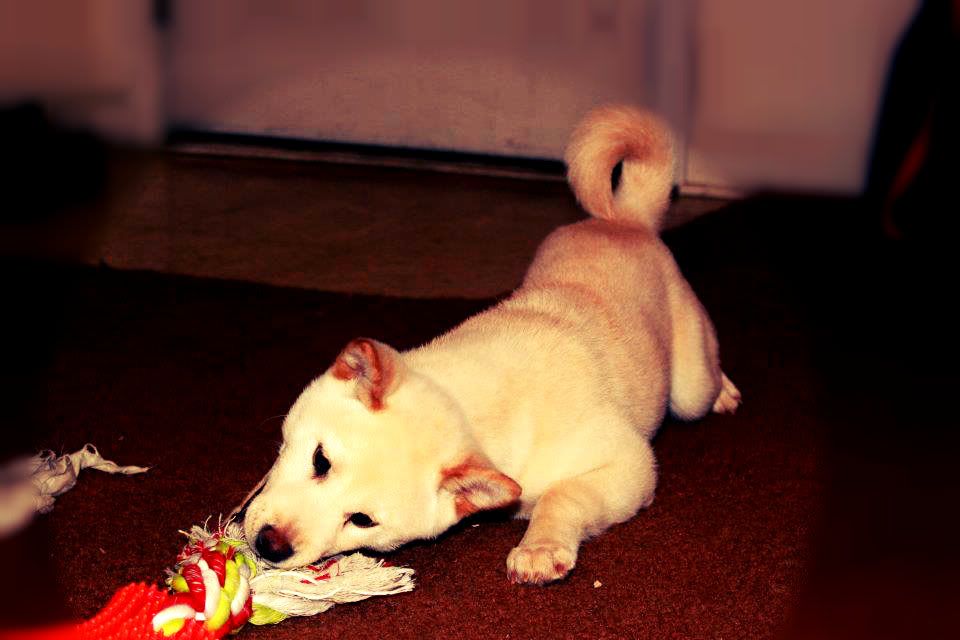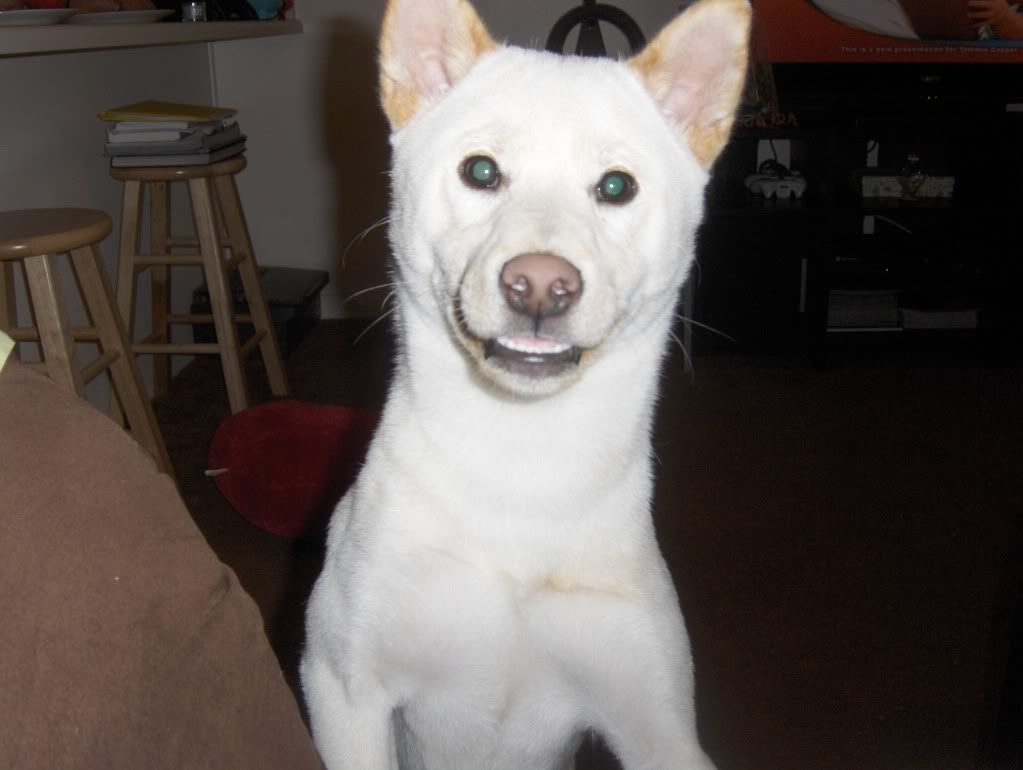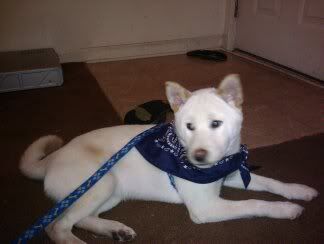Every dog has a favorite bone that they love to chew on. Marou's new favorite bone is actually a cow hoof that we bought from our local pet boutique as a treat for being good while we were out in town one day. He has thoroughly enjoyed his new bone, and it has lasted him quite a while for a chewing bone.
The Issue with giving any dog a bone to chew on is to constantly watch them while they are chewing it, as ingesting large amounts of bone can cause digestive upset resulting in possible vomiting. The uncooked, unbleached bones are better for dogs, as they don't splinter as easily and they aren't treated with the harsh chemicals that the bleached bones are. Cooked bones tend to splinter very easily, and this causes digestive problems as well as possible bleeding in the digestive tract.
Organic bones and cow hooves are a great treat for almost any dog, and they can be filled with spread such as Kong's Stuff'n or your choice of wet dog food and frozen to make an almost irresistable treat for any pooch.
After your pooch finishes cleaning out the bone or hoof, politely take it from them, rinse out any residue, and pat dry to save it for later use.
The main downside that we have found to giving your dog organic bones (and probably any bone) is the smell. Our house smells like a pasture when we give Marou his cow hoof to chew on. We haven't found any way to avoid the smell, but we only let him chew it for a few minutes at a time, so it doesn't get too bad.
Lamb ribs make a great substitute to avoid the smell associated with hollow bones and still give your dog a neat treat. Good ones will come with just a little bit of meat and fat scraps on them, which dogs seem to love to gnaw and pick at for hours, and after the meat is gone, the bone can still be used as a chew toy because of the oils and scents left behind. Extra care must be used with any rib bones, as they tend to splinter easier than thicker bones. They are also easier for your dog to break and swallow, so monitoring his/her ingestion of the actual bone is very important.
Deer antlers are another type of bone treat that seem to get dogs super excited. The good ones will have a decent amount of marrow in the center that your dog could spend hours trying to get out, which is a blessing when dealing with dogs who like to get destructive when bored. Marou will chew on the antler as long as we will let him and never get bored of it because he gets just a little bit of reward with every bit of effort. He has spent countless hours chewing on it over the time we've had it, and he still runs right to it as soon as we bring it out for him.
No matter the type of dog or bone, the important thing is to always pay close attention to them when they are chewing. Any dog can be potentially hurt by a stray bone splinter or shard that gets lodged somewhere it shouldn't be, but, if monitored properly, a bone can become your dog's new favorite treat.






